Air Quality Monitoring System
Providing World-Class air quality monitoring system and services
ECOTECH Air Quality Analysers
Serinus 10 Ozone Analyser

The Serinus 10 Ozone (O3) analyser delivers precise and reliable performance at excellent value. It uses proven non-dispersive ultraviolet (UV) absorption technology to measure O3 in ambient air (LDL < 0.5 ppb, range 0 – 20 ppm).
Selected materials available in other languages by request.
Serinus 30 Carbon Monoxide Analyser
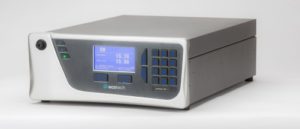
The Serinus 30 Carbon Monoxide analyser delivers precise and reliable performance at excellent value. It uses proven NDIR gas filter correlation technology to measure CO in ambient air (LDL < 40 ppb, range 0 – 200 ppm).
Selected materials available in other languages by request.
Serinus 40 Oxides of Nitrogen Analyser

The Serinus 40 Oxides of Nitrogen analyser delivers precise and reliable performance at excellent value. It uses proven chemiluminescence technology to measure NO, NO2 and NOx in ambient air (LDL <0.4 ppb, range 0-20 ppm).
Selected materials available in other languages by request.
Serinus 50 SO2 Analyser

The Serinus 50 Sulfur Dioxide (SO2) analyser delivers precise and reliable performance at excellent value. It uses proven pulsed UV fluorescent radiation technology to measure SO2 in ambient air (LDL <0.3 ppb, Range 0-20 ppm).
The Serinus range of analysers has been designed using our experience and knowledge gained from operating large air quality monitoring networks for more than 35 years. The result: instruments that integrate seamlessly into continuous monitoring networks.
Selected materials available in other languages by request.
Serinus 44 Ammonia Analyser
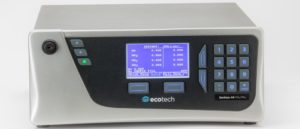
The Serinus 44 analyser delivers precise and reliable performance at excellent value. It uses proven chemiluminescence technology and an external thermal catalytic converter to measure NO, NO2, NOx and NH3 in ambient air (LDL < 0.4 ppb, Range 0 – 20 ppm).
The Serinus range of analysers has been designed using our experience and knowledge gained from operating large air quality monitoring networks for more than 40 years. The result: instruments that integrate seamlessly into continuous monitoring networks.
Selected materials available in other languages by request.
Serinus 51 SO2/H2S Analyser
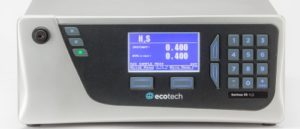
The Serinus 51 Sulfur Dixoide and Hydrogen Sulfide analyser delivers precise and reliable performance at excellent value. It combines pulsed fluorescence detection with an internal catalytic converter to sequentially measure H2S and SO2 in the range of 0-2/0-20 ppm respectively with a detection limit of 0.3 ppb.
The Serinus range of analysers has been designed using our experience and knowledge gained from operating large air quality monitoring networks for more than 35 years. The result: instruments that integrate seamlessly into continuous monitoring networks.
SYNSPEC Hidrocarbon Analysers
Syntech Spectras GC955

The Syntech Spectras GC955 systems are the top of the line GC. Most systems are built as a model 600 or 800.
But we have also more systems: the 100, 300, 400 and 500 for emission, workers health protection or process control applications. These 4 types are mainly built on order for special customer needs.
The our sales team can advise you on the right type of analyser for your special application field.
Synspec Alpha 114, 115 and 116

The Alpha 114 is a system that uses a cooled trap to concentrate low boiling hydrocarbons and to separate them from methane. So it does not have a separate column. The detector is an FID detector.
The Alpha 115 and 116 are systems with a sample loop and a single column. The column has a special multi-layer packing to enable good separation of Methane from the other hydrocarbons. In backflush mode the hydrocarbons are then analysed as one peak.
The detector is an FID.
The loop size is 2 ml for the Alpha 115, for the Alpha 116 the loop is 250 ul or less.
The Delta Series
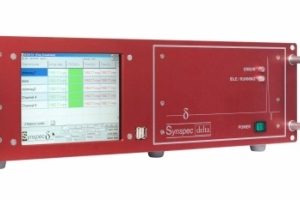
The Delta series is for applications in industry in ppm to % concentrations.
A few typical features:
- Calculation of time weighted averages
- Alarm features for low and high alarms
- Communication to customer alarm systems by RS232, Ethernet, SMS etc.
- Modbus protocols on customer specification
- Daily automatic validation with customer specified reporting
The Delta is supplied in two types:
- Delta 100: with a loop, a packed column and as detector PID, FID or TCD
- Delta 300: with a loop, a capillary column and as detector PID, FID or TCD.
Aerosol Magee Scientific instruments
AETHALOMETER® AE33
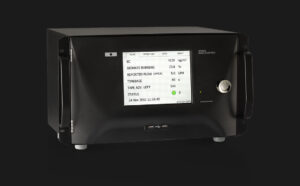
The Aethalometer is the instrument most-used in the world for real-time monitoring and speciation of Aerosol Black Carbon. All Aerosol Magee Scientific instruments are considered to be the most reliable instruments for the measurement and research of carbonaceous aerosols. The Aethalometer has provided data for thousands of published scientific papers and reports.
Key Features
- DUALSPOTTM – PATENTED TECHNOLOGY
- SOURCE APPORTIONMENT – BIOMASS BURNING VS FOSSIL FUEL
- MULTI WAVELENGTH OPERATION
- REMOTE ACCESS
- RELIABLE AND HIGH QUALITY DATA
SOOTSCAN™ OT21
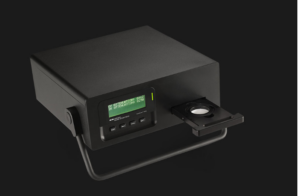
The SootScan™ OT21 Optical Transmissometer benchtop analyzer is a simple and robust instrument that measures the Black Carbon content of an aerosol sample collected on a filter, either from ambient air or source emissions.
Key Features
- 2-WAVELENGTH OPERATION: UV (370 NM) & IR (880 NM)
- NON-CONTACT, NON – DESTRUCTIVE, NONCONTAMINATING
- ACCEPTS 25, 37, or 47 MM DIAMETER FILTERS
- ANALYZES GLASS FIBER, QUARTZ FIBER, TEFLON FILTERS
Particulate Matter Monitor for Ambient Air
Fidas 200
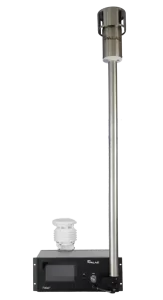
The Fidas® 200 System particulate matter monitor was explicitly developed for environmental regulatory monitoring. It is the market leader for continuous and simultaneous monitoring of ambient PM2.5 and PM10 in European countries and countries close to Europe. At the same time, the Fidas® 200 system is the most service-friendly, continuously measuring device. The officially recognized possibility to validate the system on-site is unique.
The Fidas® 200 version is a 19″ plug-in unit for air-conditioned monitoring stations (temperature range 5 – 40 °C). Variants are the Fidas® 200 E with remote sensor (for easier integration into stations with existing roof penetration) and the Fidas® 200 S designed for outdoor installation (with stainless steel weatherproof housing), whereby this does not require full air conditioning, but can only be operated with an auxiliary heater for indoor temperatures below 5°C.
Fidas 200 E
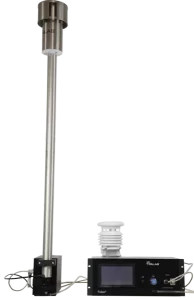
The Fidas® 200 E version shown here consists of a 19″ plug-in unit and a remote sensor (connection length 3 m, other sizes on request) for use in air-conditioned monitoring stations (temperature range 5 – 40 °C). The remote sensor, flanged to the lower end of the aerosol sampling tube, greatly simplifies installation in stations with an existing roof penetration. Variants of the Fidas® 200 E are the basic Fidas® 200 and the Fidas® 200 S (with stainless steel weatherproof housing) designed for outdoor installation.
Fidas 200 S
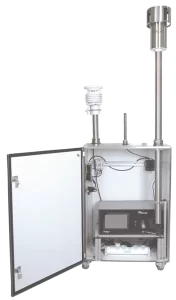
The Fidas® 200 S version is a 19″ plug-in unit mounted in a splash-proof stainless steel control cabinet for outdoor use (temperature range -20 – 50 °C). A larger, air-conditioned control cabinet is available on request, allowing the installation of additional devices. Variants of the Fidas® 200 S are the basic Fidas® 200 and the Fidas® 200 E with a remote sensor (for easier integration into stations with existing roof feed-through).
Elemental and Metals Measurement
Xact® 625i Ambient Continuous Multi-Metals Monitor
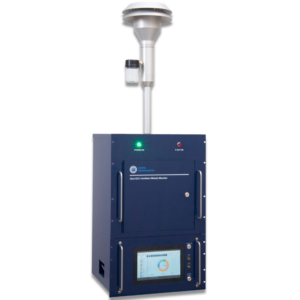
SCI’s Xact® 625i is designed for high time resolution multi-metals monitoring of ambient air, with detection limits that rival those of laboratory analysis. The Xact® 625i comes standard with a solid-state meteorological sensor and SCI’s proprietary ADAPT analysis package, making the instrument one of the most powerful air pollution source detection offerings in the industry.
The system uses reel-to-reel filter tape sampling and nondestructive energy dispersive X-ray fluorescence (EDXRF) analysis. The air is sampled through a low volume (16.7 l/min) particulate matter (PM) size-selective inlet and drawn through a filter tape. The resulting PM deposit is then advanced into the analysis area where the sample is analyzed by EDXRF for selected metals while the next sample is collected.






